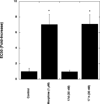14-Alkoxy- and 14-acyloxypyridomorphinans: μ agonist/δ antagonist opioid analgesics with diminished tolerance and dependence side effects
- PMID: 23016952
- PMCID: PMC3499949
- DOI: 10.1021/jm300686p
14-Alkoxy- and 14-acyloxypyridomorphinans: μ agonist/δ antagonist opioid analgesics with diminished tolerance and dependence side effects
Abstract
In the search for opioid ligands with mixed functional activity, a series of 5'-(4-chlorophenyl)-4,5α-epoxypyridomorphinans possessing alkoxy or acyloxy groups at C-14 was synthesized and evaluated. In this series, the affinity and functional activity of the ligands were found to be influenced by the nature of the substituent at C-14 as well as by the substituent at N-17. Whereas the incorporation of a 3-phenylpropoxy group at C-14 on N-methylpyridomorhinan gave a dual MOR agonist/DOR agonist 17h, its incorporation on N-cyclopropylmethylpyridomorphinan gave a MOR agonist/DOR antagonist 17d. Interestingly, 17d, in contrast to 17h, did not produce tolerance or dependence effects upon prolonged treatment in cells expressing MOR and DOR. Moreover, 17d displayed greatly diminished analgesic tolerance as compared to morphine upon repeated administration, thus supporting the hypothesis that ligands with MOR agonist/DOR antagonist functional activity could emerge as novel analgesics devoid of tolerance, dependence, and related side effects.
Figures







Similar articles
-
Synthesis and Structure-Activity Relationships of 5'-Aryl-14-alkoxypyridomorphinans: Identification of a μ Opioid Receptor Agonist/δ Opioid Receptor Antagonist Ligand with Systemic Antinociceptive Activity and Diminished Opioid Side Effects.J Med Chem. 2020 Jul 23;63(14):7663-7694. doi: 10.1021/acs.jmedchem.0c00503. Epub 2020 Jun 30. J Med Chem. 2020. PMID: 32530286 Free PMC article.
-
Identification of opioid ligands possessing mixed micro agonist/delta antagonist activity among pyridomorphinans derived from naloxone, oxymorphone, and hydromorphone [correction of hydropmorphone].J Med Chem. 2004 Mar 11;47(6):1400-12. doi: 10.1021/jm030311v. J Med Chem. 2004. PMID: 14998329
-
Synthesis and biological evaluation of 14-alkoxymorphinans. 21. Novel 4-alkoxy and 14-phenylpropoxy derivatives of the mu opioid receptor antagonist cyprodime.J Med Chem. 2004 Jun 3;47(12):3242-7. doi: 10.1021/jm031126k. J Med Chem. 2004. PMID: 15163203
-
The search for opioid analgesics with limited tolerance liability.Peptides. 2020 Aug;130:170331. doi: 10.1016/j.peptides.2020.170331. Epub 2020 Jun 1. Peptides. 2020. PMID: 32497566 Review.
-
Direct association of Mu-opioid and NMDA glutamate receptors supports their cross-regulation: molecular implications for opioid tolerance.Curr Drug Abuse Rev. 2012 Sep;5(3):199-226. doi: 10.2174/1874473711205030199. Curr Drug Abuse Rev. 2012. PMID: 22920535 Review.
Cited by
-
Asymmetric synthesis and in vitro and in vivo activity of tetrahydroquinolines featuring a diverse set of polar substitutions at the 6 position as mixed-efficacy μ opioid receptor/δ opioid receptor ligands.ACS Chem Neurosci. 2015 Aug 19;6(8):1428-35. doi: 10.1021/acschemneuro.5b00100. Epub 2015 May 13. ACS Chem Neurosci. 2015. PMID: 25938166 Free PMC article.
-
The Intriguing Effects of Substituents in the N-Phenethyl Moiety of Norhydromorphone: A Bifunctional Opioid from a Set of "Tail Wags Dog" Experiments.Molecules. 2020 Jun 6;25(11):2640. doi: 10.3390/molecules25112640. Molecules. 2020. PMID: 32517185 Free PMC article.
-
μ Opioid receptor: novel antagonists and structural modeling.Sci Rep. 2016 Feb 18;6:21548. doi: 10.1038/srep21548. Sci Rep. 2016. PMID: 26888328 Free PMC article.
-
Further Optimization and Evaluation of Bioavailable, Mixed-Efficacy μ-Opioid Receptor (MOR) Agonists/δ-Opioid Receptor (DOR) Antagonists: Balancing MOR and DOR Affinities.J Med Chem. 2015 Nov 25;58(22):8952-69. doi: 10.1021/acs.jmedchem.5b01270. Epub 2015 Nov 13. J Med Chem. 2015. PMID: 26524472 Free PMC article.
-
Probes for narcotic receptor mediated phenomena. 47. Novel C4a- and N-substituted-1,2,3,4,4a,9a-hexahydrobenzofuro[2,3-c]pyridin-6-ols.Bioorg Med Chem. 2013 Jun 1;21(11):3298-309. doi: 10.1016/j.bmc.2013.02.060. Epub 2013 Apr 3. Bioorg Med Chem. 2013. PMID: 23618710 Free PMC article.
References
-
- McCurdy CR, Prisinzano TE. Opiod Receptor Ligands. In: Abraham DJ, Rotella DP, editors. Burger's Medicinal Chemistry, Drug Discovery and Development. 7th ed. Vol. 8. New York, NY: John Wiley & Sons; 2010. pp. 569–735.
-
- Marcus DA, Cope DK, Deodhar A, Payne R. Chronic Pain: An Atlas of Investigation and Management. Oxford: Clinical Publishing; 2009. Chronic pain management strategies; pp. 17–38.
-
- Benyamin R, Trescot AM, Datta S, Buenaventura R, Adlaka R, Sehgal N, Glaser SE, Vallejo R. Opioid complications and side effects. Pain Physician. 2008;11:S105–S120. - PubMed
-
- Zollner C, Stein C. Opioids. Handbook Exp Pharmacol. 2007:31–63. - PubMed
-
- Dhawan BN, Cesselin F, Raghubir R, Reisine T, Bradley PB, Portoghese PS, Hamon M. International Union of Pharmacology. XII. Classification of opioid receptors. Pharmacol. Rev. 1996;48:567–592. - PubMed
Publication types
MeSH terms
Substances
Grants and funding
LinkOut - more resources
Full Text Sources
Other Literature Sources
Chemical Information
Medical
Research Materials

